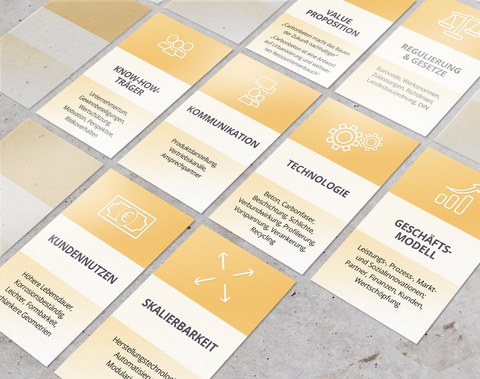TP 2: Technical aspects and analyses of c³ value chain
Table of contents
Project data
| Titel | Title TP 2: Technische Aspekte und Analysen im Verbundvorhaben C3-W: Analyse der C3-Wertschöpfungskette und ihrer Wettbewerbsfähigkeit | TP 2: Technical aspects and analyses as part of the joint research project C3-W: Analysis of the C3 value chain and its competitiveness Förderer | Funding Bundesministerium für Bildung und Forschung (BMBF); Projektträger: FZ Jülich GmbH / C3 – Carbon Concrete Composite Zeitraum | Period 07.2017 - 06.2019 Leiter Teilvorhaben | Subproject manager Prof. Dr.-Ing. Dr.-Ing. E.h. Manfred Curbach Bearbeiter | Contributor Dipl.-Wirsch.-Ing. (FH) Matthias Tietze, M.A. Projektpartner | Project Partner HTWK Leipzig, Lehrstuhl für VWL, Innovationsökonomik |
Report in the year book 2019
BUILDING WITH CARBON REINFORCED CONCRETE – AN ECONOMIC MEGATREND

Aspects of economic efficiency
What does carbon reinforced concrete cost? How does it become competitive? These are exactly the questions that the C³ project pursues in terms of economic effi ciency. In order to be able to answer them, methods from market research, among others, were used. At the beginning, the applications to be investigated were selected that would allow a fast market entry with a large market volume (mass components and -applications). In the next step of the investigation, a total of fi ve selected applications were compared with the respective technology leader existing on the market. In particular, the cost and time factors were examined in detail. From this, partial value-added chains were developed,
which present and evaluate carbon reinforced concrete production in detail, e.g. in the area of precast concrete production up to the implementation. The upstream chain of the production of carbon reinforcement material was also examined and analysed with regard to its cost structures and expenditure times and the necessary adjustment steps for an economic carbon reinforced concrete value chain were derived. These investigations serve
as a basis for the analysis of the carbon reinforced concrete value chain and the current state of the art on the company and manufacturer side, in direct comparison to the value chain of reinforced concrete. Furthermore, new roles of already existing partners and actors allow to evaluate and classify the changes and to describe a marketable value chain for carbon reinforced concrete for the future. In parallel, the demand side is examined in more detail with the help of a preference analysis. This serves to find out for which properties of a building product the representative of the demand is willing to pay. Therefore, an instrument from product market research is used, which has not yet been applied in the building and construction industry, namely the conjoint analysis (composite measurement). This analysis makes it possible to estimate the structure of the preferences of a consumer. It requires a data collection, e. g. a quantitative survey, in order to obtain a representative and reliable database. For this survey, a questionnaire was developed based on 15 expert interviews, which form a first qualitative data basis and basis for the questionnaire. By using a conjoint questionnaire and evaluation tool,
it is possible to transfer the choice-based conjoint analysis to them. In addition to the C³ partners, representatives from the public administration, real estate and housing management sectors, as well as architects and engineers are interviewed to filter out
their respective preferences. Conclusions can then be drawn about the value
chain itself by identifying particularly relevant steps through their “property generation” and deriving recommendations for action for the competitive value chain.
